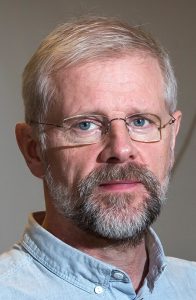About me
I am a Professor in physiology at the Department of Physiotherapy at the Health Science School at the University of Iceland Head of the department. Also, I am director for the Research Centre of Movement Science at the same university.
BS in Biology from University of Iceland, June 1981.
Post graduate diploma from University of Iceland, 1983.
MSc in fish physiology from University of Manitoba, 1986.
PhD in fish physiology from University of Manitoba, 1992.
Teaching assistant in genetics and physiology at the University of Iceland, and research assistant at Biological Institute, University of Iceland, 1981-1983.
Teaching Assistant in developmental biology and physiology at department of Zooloy, University of Manitoba, 1985-1987.
Research Assistant at the Freshwater Institute at the University of Manitoba, 1983-1991.
Lecturer at the University of Iceland from February 1st 1991, to January 31st 1993.
Assistant Professor in Physiology at department of physiotherapy, University og Iceland, 1993-1997.
Associate Professor in Physiology from November 1st, 1997.
Previously, I have been involved with research projects on prostaglandin- and steroid pheromones in fishes. Also, I have conducted research on energy balance in Arctic charr. That project was a part of a bigger project that was a cooperation between University of Iceland, the Agricultural University at Hólar, Institute of Freshwater Fisheries and Agricultural Research Institute, and was named: Development of methods to control growth and sexual maturation in Arctic charr. Over the last several years I have been mainly involved with research in three areas:
A) Research of physical activity in children, adults and elderly by questionnaires and accelerometers. Although this involves methodology and analysis, it also looks at the relationship of physical activity with fitness, body composition and various health risk factors. I am cooperation with several foreign and Icelandic researchers in this area.
B) Research on electromyography (EMG) and its use in identifying fatigue. These researches involves understanding the changes that occur in EMG during various types of fatigue and how it affects movement patterns of humans.
C) Research and testing of fitness. Among other projects, we have developed a new test to measure anaerobic threshold (lactate threshold) that is easier to administer and more reliable than older tests.
